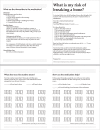Encounter Decision Aid vs. Clinical Decision Support or Usual Care to Support Patient-Centered Treatment Decisions in Osteoporosis: The Osteoporosis Choice Randomized Trial II
- PMID: 26010755
- PMCID: PMC4444262
- DOI: 10.1371/journal.pone.0128063
Encounter Decision Aid vs. Clinical Decision Support or Usual Care to Support Patient-Centered Treatment Decisions in Osteoporosis: The Osteoporosis Choice Randomized Trial II
Abstract
Purpose: Osteoporosis Choice, an encounter decision aid, can engage patients and clinicians in shared decision making about osteoporosis treatment. Its effectiveness compared to the routine provision to clinicians of the patient's estimated risk of fracture using the FRAX calculator is unknown.
Methods: Patient-level, randomized, three-arm trial enrolling women over 50 with osteopenia or osteoporosis eligible for treatment with bisphosphonates, where the use of Osteoporosis Choice was compared to FRAX only and to usual care to determine impact on patient knowledge, decisional conflict, involvement in the decision-making process, decision to start and adherence to bisphosphonates.
Results: We enrolled 79 women in the three arms. Because FRAX estimation alone and usual care produced similar results, we grouped them for analysis. Compared to these, use of Osteoporosis Choice increased patient knowledge (median score 6 vs. 4, p = .01), improved understanding of fracture risk and risk reduction with bisphosphonates (p = .01 and p<.0001, respectively), had no effect on decision conflict, and increased patient engagement in the decision making process (OPTION scores 57% vs. 43%, p = .001). Encounters with the decision aid were 0.8 minutes longer (range: 33 minutes shorter to 3.0 minutes longer). There were twice as many patients receiving and filling prescriptions in the decision aid arm (83% vs. 40%, p = .07); medication adherence at 6 months was no different across arms.
Conclusion: Supporting both patients and clinicians during the clinical encounter with the Osteoporosis Choice decision aid efficiently improves treatment decision making when compared to usual care with or without clinical decision support with FRAX results.
Trial registration: clinical trials.gov NCT00949611.
Conflict of interest statement
Figures
References
-
- Crandall CJ, Newberry SJ, Diamant A, Lim YW, Gellad WF, Suttorp MJ, et al. (2012). Treatment To Prevent Fractures in Men and Women With Low Bone Density or Osteoporosis: Update of a 2007 Report. Rockville (MD). - PubMed
-
- National Osteoporosis Foundation (2013) Clinician's guide to prevention and treatment of osteoporosis Washington, DC: National Osteoporosis Foundation.
-
- Cramer JA, Gold DT, Silverman SL, Lewiecki EM (2007) A systematic review of persistence and compliance with bisphosphonates for osteoporosis. Osteoporos Int doi:101007/s00198-006-0322-8 18: 1023–1031. - PubMed
-
- Seeman E, Compston J, Adachi J, Brandi ML, Cooper C, Dawson-Hughes B, et al. (2007) Non-compliance: the Achilles' heel of anti-fracture efficacy. Osteoporos Int doi:101007/s00198-006-0294-8 18: 711–719. - PubMed
Publication types
MeSH terms
Substances
Associated data
LinkOut - more resources
Full Text Sources
Other Literature Sources
Medical



